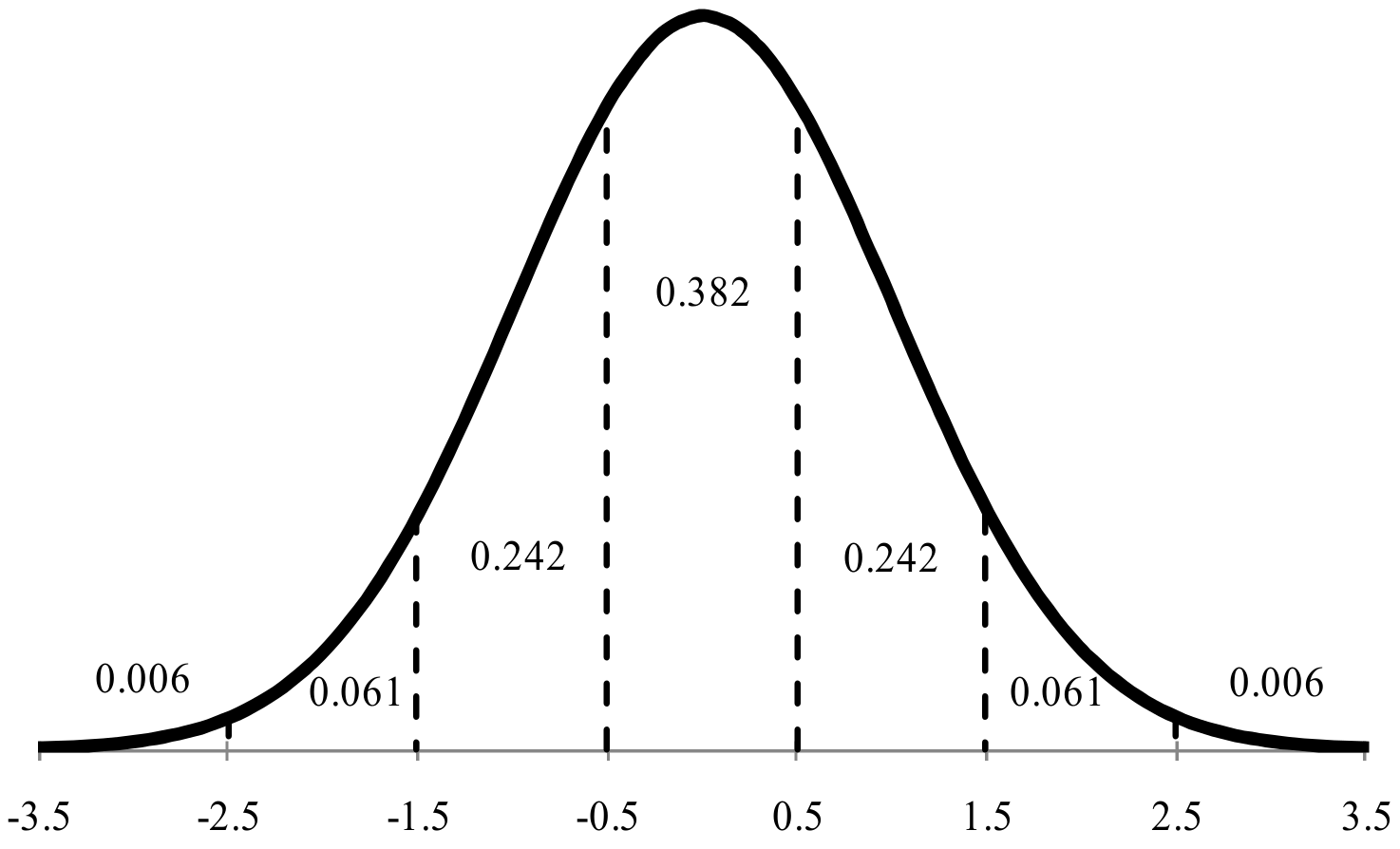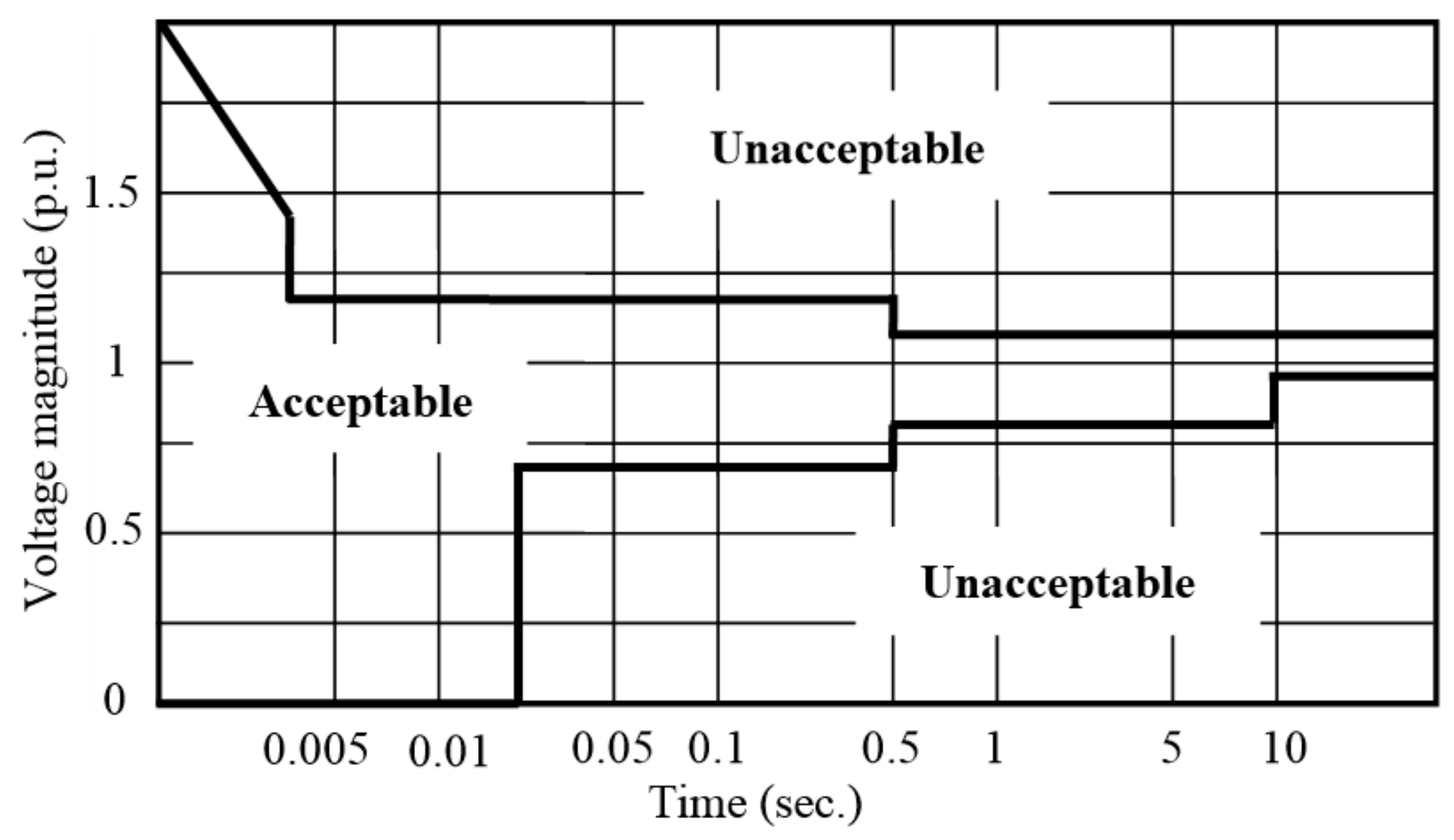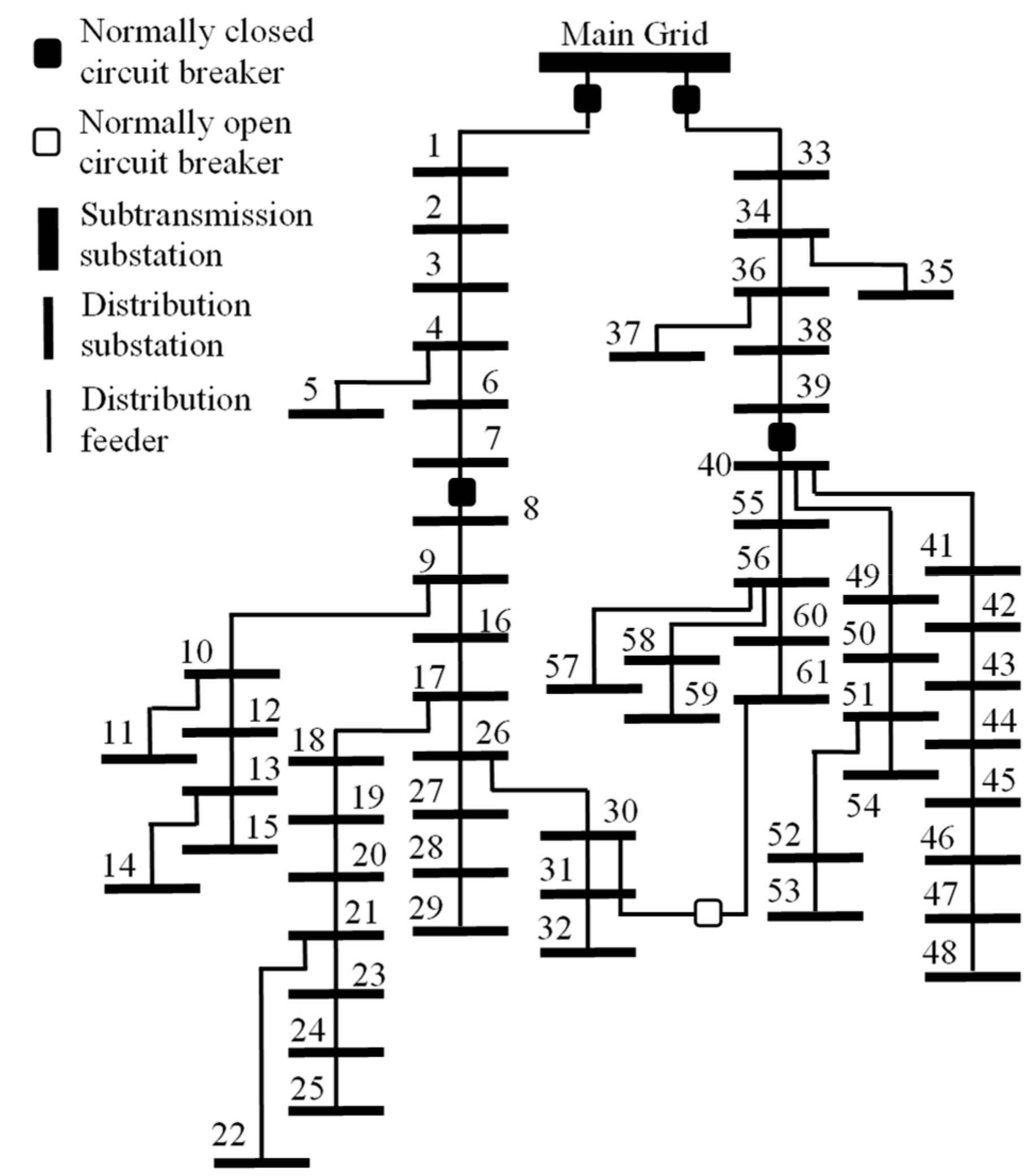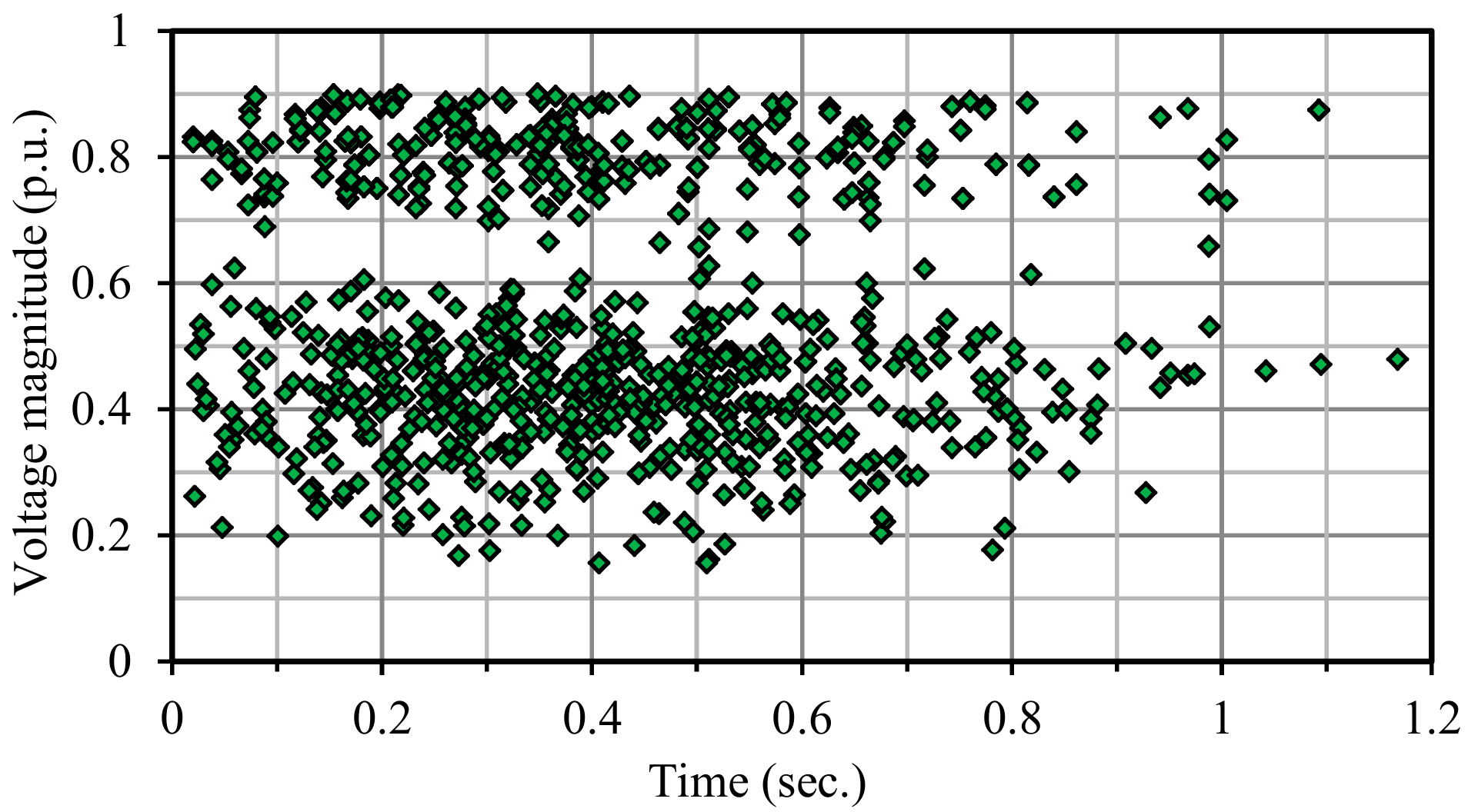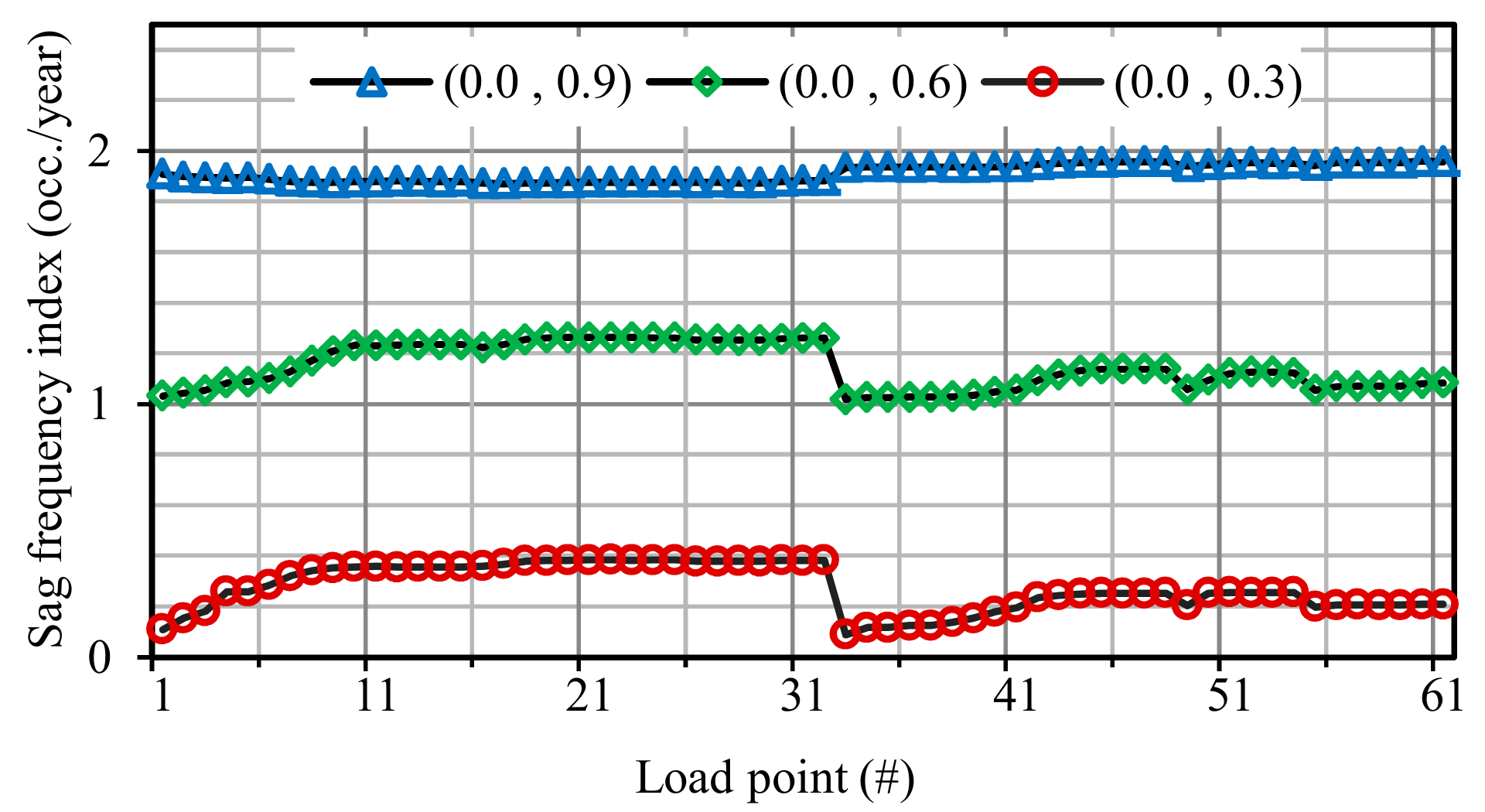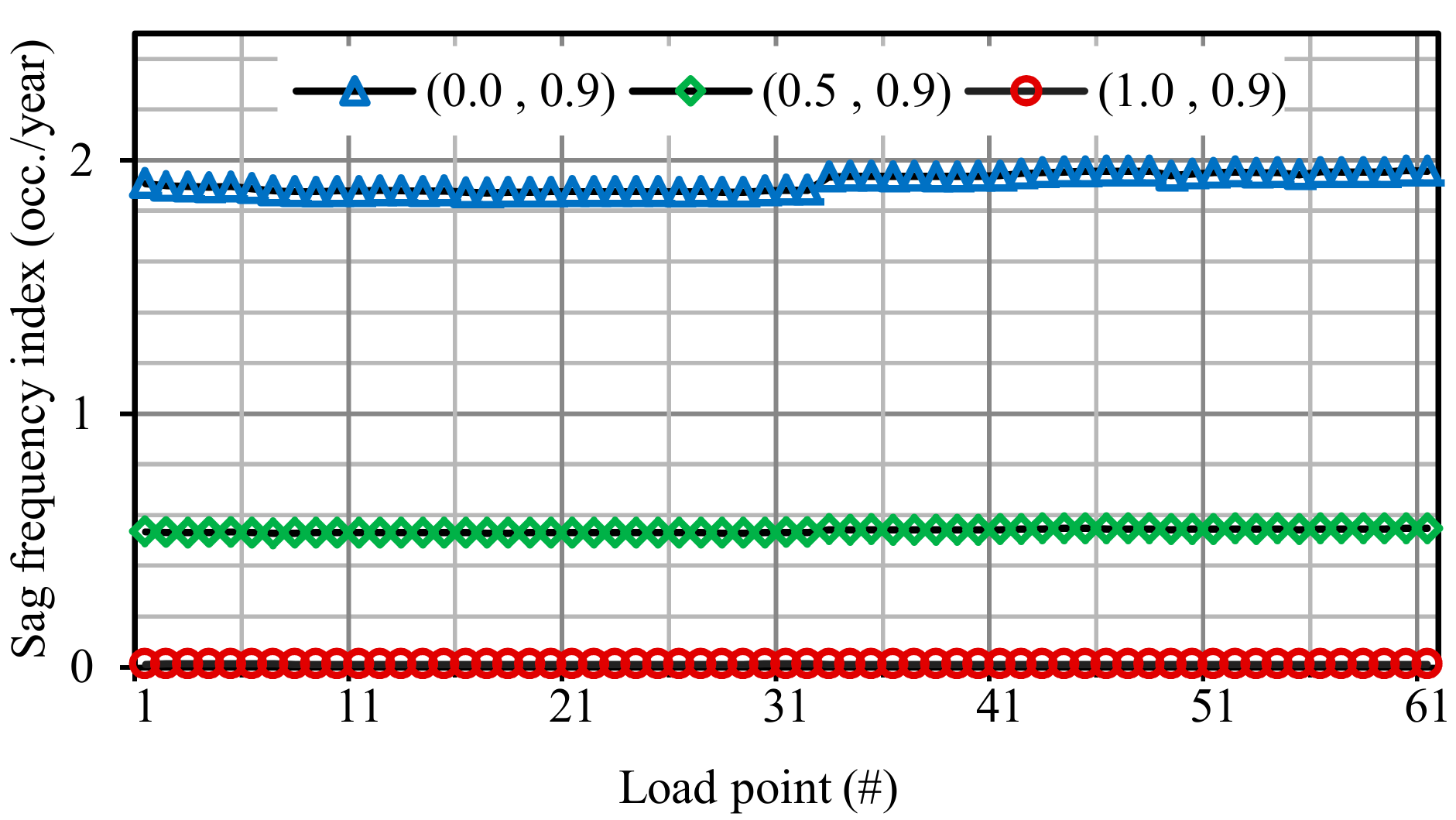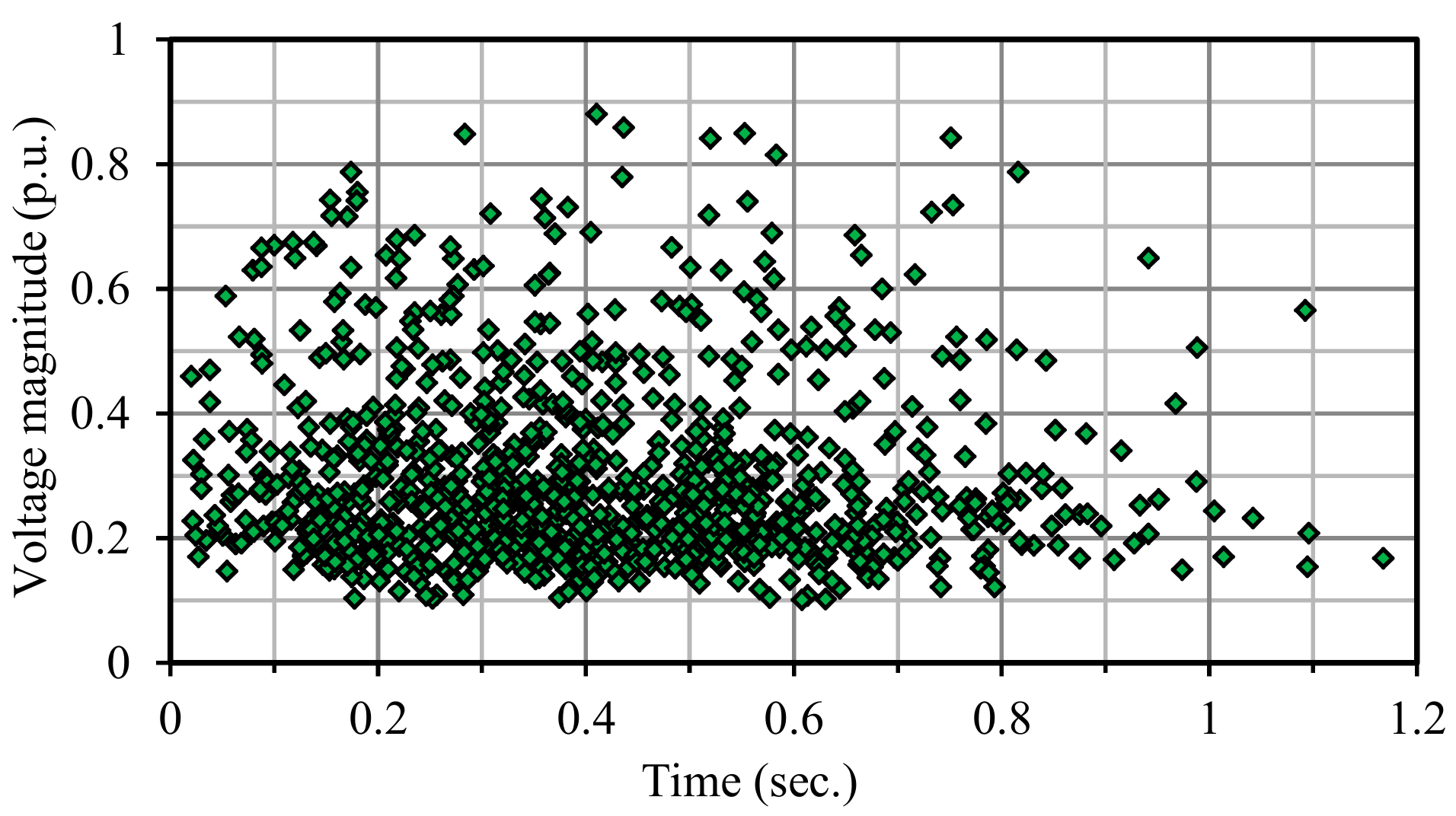Since years ago, traditional reliability indices such as frequency and duration of sustained interruptions have reflected the quality of service provided by distribution companies to their customers. Today, however, by rapid evolution and proliferation of power electronic devices, the impact of more subtle voltage disturbances such as voltage sags and swells cannot be ignored. Voltage sag is designated as a decrease in voltage magnitude between 10% and 90% of the nominal value for durations shorter than 1 minute [
1]. It is worthwhile to note that there might be slightly different definitions for the phenomena in different standards. As an example, there are standards which define voltage sag as a decrease in voltage magnitude between 5% and 90%. The definition can originate substantial dissatisfaction and economic losses due to the malfunction of sag-sensitive equipment such as contactors, computers, programmable logic controllers (PLCs), and adjustable speed drives (ASDs) [
2,
3]. This emerging service quality concern obliges distribution companies to take into account the impacts on sag mitigation of different alternatives in network design and operation studies. For doing so, a distribution company needs to have effective tools to perform sag performance analysis of its network under different reinforcement alternatives. The tools should be capable to precisely estimate both load point-oriented and system-oriented issues caused by voltage sags. System and load point-oriented indices can help system designers to find cost-effective alternate plans and solutions such as employing fault current limiters (FCL) for voltage sag problems [
4]. Load point-oriented indices also guide customers to choose appropriate equipment specifications for critical processes and select solutions such as installing uninterruptable power supply (UPS) to provide ride through support for critical appliances [
3,
4].
In the past decade, considerable efforts have been devoted to evaluate the voltage sag performance of distribution networks. Considering the fact that service quality is no longer assessed by only sustained interruption indices, [
5] defined a few indices addressing frequency occurrence of voltage sags and swells as a function of their magnitudes. However, since measurements recorded across the network are prerequisites for the indices, the monitoring period required to achieve a reasonable accuracy would be too long. In Ref. [
6], annual sag frequency and cost were estimated by a simulation-based approach. The study, however, overestimates the costs by ignoring the impact of sag duration on the cost which is less for shorter sags. Annual sag frequency and the associated cost were estimated in Ref. [
7] where sag duration was taken into account in cost allocation to voltage sag events. In Ref. [
8], the Monte Carlo simulation approach was employed to achieve a voltage sag density table. The table was then used to calculate an index representing the average lost energy during voltage sag events. The index, however, does not reflect the severity of the event since dissatisfaction and economic losses caused by a sag event are due to malfunction and/or trip of equipment, not the amount of energy they absorb during the event. Dissimilar to the reviewed papers which focused on the overall performance of a network, Ref. [
9] described an analytical method to obtain a voltage sag density table for a specific load point. Modeling guidelines for representing major distribution network equipment such as lines, transformers, and protective and monitoring devices in voltage sag studies were discussed in Ref. [
10]. A few system-oriented indices such as equivalent interruption duration were defined in Ref. [
11] to reflect the adverse impact of voltage sags on service quality. A Monte Carlo simulation was performed in Ref. [
12] to explore the impact of coordination among protective devices on voltage sag characteristics caused by faults in distribution networks. The voltage sag characteristics obtained in Ref. [
12] were used in Ref. [
13] to calculate system-oriented frequency and duration indices for sag events. The obtained results revealed the significant role of the protection system in voltage sag mitigation. A voltage sag density table and the number of unacceptable sags at a sensitive load point were estimated in Ref. [
14]. The great ability of adequate maintenance of critical lines and feeders and proper coordination of the protection system in sag mitigation were also demonstrated in that paper. The above reviewed works have particular pros and cons. Some of them focused on system-oriented indices while the others paid attention to load point-oriented indices. The works mainly concentrates on studying potential impacts of monitoring and protection systems on voltage sag performance of a system. Moreover, neither of the reviewed articles provided a general framework for sag performance analysis of a distribution network. This is in spite of the growing importance and priority of power quality issues in the recent years. Therefore, there is a need for a general sag performance evaluation framework. To fill this gap, this paper establishes a three-step framework for sag performance assessment of distribution networks. The steps are called state selection, state evaluation, and index calculation, respectively. The state selection step is to select likely system states in which fault type, location, and the associated resistance represent a system state. The state evaluation step is to specify if voltage sag occurred in the network. If there is any, its severity and duration should also be estimated in this step. Once the likely sags and their characteristics are obtained, system and load point-oriented indices are calculated in the third step. A review over the existing indices is provided in this paper. Moreover, a few indices reflecting both system and load point issues caused by voltage sag are defined in this paper. This would be a step towards attaining the most appropriate indices since no consensus has been reached about them and respective standards are still in progress. The indices help companies to find effective sag mitigation measures and customers to provide ride through support for their critical processes. In summary, the major contributions of this article are as follows:

